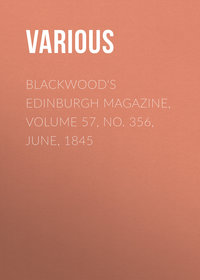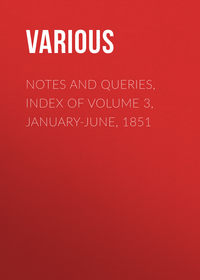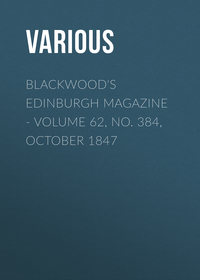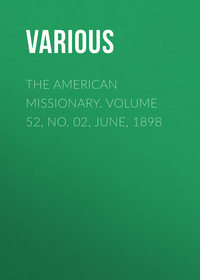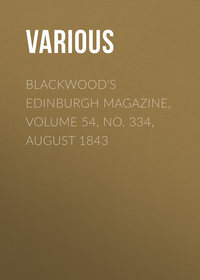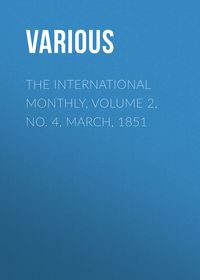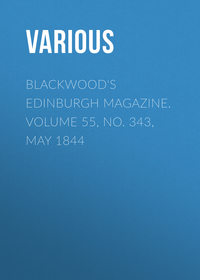 полная версия
полная версияThe Mirror of Literature, Amusement, and Instruction. Volume 12, No. 341, November 15, 1828

Various
The Mirror of Literature, Amusement, and Instruction / Volume 12, No. 341, November 15, 1828
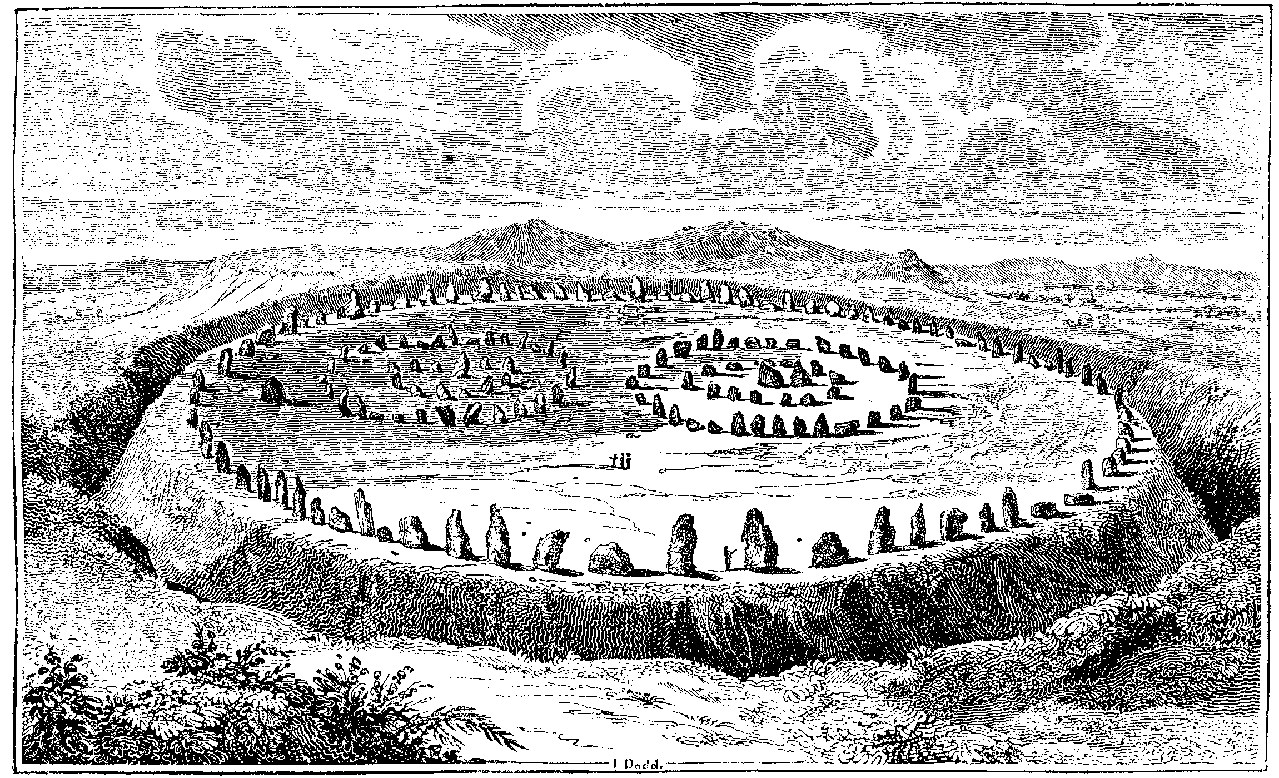
GRAND DRUIDICAL TEMPLE AT ABURY.
TEMPLE AT ABURY
What means the mysterious circle of stocks and stones on the other side? Such will be the question of many a lover of fun, novel, fiction, and romance; and though we cannot settle their origin with the quickness or the humour of Munden's Cockletop, we will try to let our inquirer into the secret with the smallest show of mysticism possible.
Our engraving represents the Temple of Abury, the most extensive of all the ruins in Wiltshire, attributed to the Druids. Such was its original state, before the Vandalism of modern times destroyed and levelled much of its monumental grandeur. It consisted of a grand circle, containing two minor circles. The outer circle contained upwards of 28 acres, and was surrounded by a ditch. There was a circle within each of the two circles, contained within the circumvallation; and according to Dr. Stukely, the antiquarian, the original was thus composed:—
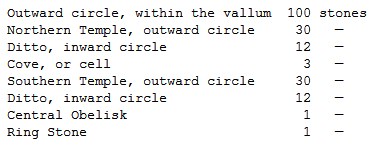
The Temple occupied a spot to which there is a gradual and imperceptible ascent on all sides, and was approached by two avenues of two hundred stones each. Its general form was that of a snake, in by gone ages, the symbol of eternity and omniscience. "To make the form still more elegant and picture-like, the head of the snake is carried up the southern promontory of Hackpen Hill—and the very name of the hill is derived from this circumstance."1
The whole figure thus represented the circle, snake, and wings. By this the founders meant to picture out the nature of the Divinity; the circle meant the supreme fountain of all being, the Father; the serpent, that divine emanation from him, which was called the Son; the wings imported that other divine emanation from them, which was called the Spirit, the Anima Mundi. That the Temple was of a religious, and not of a warlike nature, is proved by its ditch being withinside the agger of earth, contrary to the mode adopted in works of defence.
Of the devastation and decay of Abury, the following data will afford some idea:
The grand total of stones, included in the temples and avenues, was 650; in the original temples, 188.

Of very late years, says Sir Richard Colt Hoare, I do not imagine the dilapidations of the temple have been very great.
It should, however, be mentioned, that the tracing of the snake form is due to Dr. Stukeley; for his predecessor Aubrey mentions the avenue as "a solemn walk leading to a monument upon the top of the hill, without any allusion to the supposed design or its connexion with the Grand Temple at Abury."
It is a matter of greater speculation than we can here enter into, as to the date and founders of Abury; and their history is as dislocated as are the masses of its ruins. Antiquarians agree on the purpose for which it was founded, viz. for the performance of the religious ceremonies of the Druids. Sir R. Colt Hoare illustrates this point by supposing the flat ledge projecting from the vallum, to have been intended for the accommodation of sitting, to the spectators who resorted hither to the public festivals; and adds he, what a grand and imposing spectacle must so extensive and elevated an amphitheatre have presented, the vallum and its declivities lined with spectators, whilst the hallowed area was preserved for the officiating Druids, and perhaps the higher order of the people!
Gentle Reader! be ye lordling or lowlier born, once more turn back to the engraving. We have a subject of yesterday rife and ready for you, on the next page; but turn to the engraving. Look again at those circles, and the fantastic forms that compose them, and think of the infatuated thousands that were wont to assemble round them, and of the idolized sons of power that once stood within their hallowed area. Think of those days of sacrifice and superstition—those orgies of ignorance and barbarism—and contrast them with the happy, happy age of religious liberty in which it is your boast and blessing to live—and then you may read "sermons in stones," to the masterminds of your own time. To us, the stones of Abury are part of the poetry of savage life, and of more interest than all the plaster toys of these days. But they may not be so with you and "FINIS." We were once compensated for missing Fonthill and its finery, by witnessing day-break from Salisbury Plain, and associating its glories with the time-worn relics of STONEHENGE!
The engraving and data are from Mr. Higgins's Celtic Druids, for the loan of which and a portion of this article, we thank our friend "JAMES SILVESTER," whose valuable note on "Circular Temples" must stand over for our next.
We had penciled for our Supplement the following beautiful lines from Mr. Watts's "Literary Souvenir," but they will be more in place here. Silbury is an immense mound adjoining the road to Devizes, and opposite Abury; Sir R.C. Hoare thinks it part of Abury; but H. and many others think it the sepulchre of a King or Arch-Druid.
SILBURY HILL
Grave of Cunedha, were it vain to callFor one wild lay of all that buried lieBeneath thy giant mound? From Tara's hallFaint warblings yet are heard, faint echoes dieAmong the Hebrides: the ghost that sungIn Ossian's ear, yet wails in feeble cryOn Morvern: but the harmonies that rungAround the grove and cromlech, never moreShall visit earth: for ages have unstrungThe Druid's harp, and shrouded all his lore,Where under the world's ruin sleep in gloomThe secrets of the flood,—the letter'd store,Which Seth's memorial pillars from the doomPreserved not, when the sleep was Nature's tomb.H.FINE ARTS
The sister arts of Painting and Engraving have been making great progress in England for some time past, and we are disposed to think this a subject of congratulation and importance to all classes of the community.
The literature of the Fine Arts is likewise becoming more and more popular every day. They form a prominent feature in every new literary project, and not unfrequently literature, to use a hackneyed phrase, is made their vehicle—like the namby-pamby of an English opera for the strains of Rossini or Weber. The public are contented with excellence in one department and mediocrity in the other; they cannot be constantly admiring—that is out of the question—and it is probably on this account that much of what appears below par is tolerated and even encouraged.
We will not go the length of assenting to the proposal of converting Sir Joshua Reynolds's Lectures into Sermons, by the mere alteration of the terms of art into scriptural phraseology; but we venture to assert that much national good is likely to result from these advances of art, and its constant introduction into all our amusements. That it promotes the growth of virtue is too old an axiom to be refuted:
——Ingenuas didicisse fideliter artesEmollit mores, nec sinit esse feros."The Italians commonly call a taste for the fine arts, or skill in them, by the name of Virtue. They term the productions of artists objects of virtue; and a person who has a taste for such things is denominated a virtuoso, that is, a virtuous man." Such is the language of the Edinburgh Review, in commencing an article on a recently-published translation of Lanzi's History of Painting in Italy, in six octavo volumes—and what a delightful relief is this from the party declamations which usually occupy so large a portion of that "critical journal." But this is not singular, for it is now no uncommon thing to see a large letter column of a newspaper, and a similar proportion of a printed sheet published at twopence, alike occupied by "the Fine Arts."
Patronage, royal and noble, has already achieved much for painting, and even the reported project for a National Gallery does much to foster the art. It keeps the study afloat and uppermost in the public mind; and the immense increase of exhibitions, not only in London, but in provincial towns, serves to prove that patronage now consists in something more substantial than tutelar notice, and unpaid promises. Artists need no longer journey to the metropolis to find sale for their works, for their genius is nourished on its native soil by the liberality and good taste which abound in the neighbourhood of every important town in the empire. It may be as well to keep up the hue and cry about the folly of portrait-painting, if it be only to keep down the vanity of wealth; but the munificent rewards which painters receive for this branch of their art will enable them to devote a greater portion of their leisure to higher studies. Their taste will not thus be impugned; for Cooke, the actor, is known to have entertained the meanest opinion of his own performance of Richard the Third, as an historical portrait, notwithstanding it was the corner-stone of his fame. We do not invite the comparison; but Mr. Hayden began with history—his want of patronage is well known; he then tried portraits—but his want of success was reserved for the style of his Mock Election pictures, and, in all probability, they will turn out the philosopher's stone for his future life.
But it is to the splendid union of Painting, Engraving, and Literature that much of these beneficial effects may be traced. In every branch of the fine arts and literature, what a powerful influence will this triple advancement produce. Only compare the topographical works of Mr. Britton with those of his predecessors—his highly-finished line engravings, excellent antiquarian pieces on wood, and erudite descriptions, with the wretched prints and the quaintnesses of old topographers—or even with the lumber of some of our county histories. With this improvement, and that of map-work, painting has comparatively but little to do; and yet how evident is the progress of the literature of these works.2
It would be easy to adduce hundreds of instances of the recent union of painting and engraving. About five years ago, a plan was started for illustrating the Bible from pictures of the old masters. Upwards of two hundred of them were transferred to wood-blocks; but the scheme did not repay the ingenious originator—partly from their small size, uncertainty of effect to be produced on wood, and partly from the very cheap rate at which the engravings were sold—the whole series being purchaseable for three or four shillings.3 But a similar design is now in progress on metal, being the idea of La Musée in little. It consists of beautiful outline copies of the great masters, published at so cheap a rate as to be within the reach of a school-boy. Within the present year, also, two series of Views in Great Britain, one of Views in London, and another of Paris, have been publishing at the rate of threepence for each view; and when we see among their artists the names of Westall, Pugin, and Pye, we have a sufficient voucher for their excellence.
A passing notice of a few of the more splendid works of art, (for the above are among the cheap and popular projects of the day,) and we must conclude.
It would be tedious to enumerate even a small portion of the fine pictures which have been engraved during the last two years; the mention of two or three will answer our purpose. Every printseller's window will attest the fact. Only let the reader step into Mr. Colnaghi's parlours, in Cockspur-street, and we might say the spacious print gallery in Pall Mall. There let him turn over a few of the host of fine portraits which have been transferred from the canvass to the copper—the excellent series of royal portraits—and of men whose names will shine in the history of their country, when their portraits shall be gathered into the portfolios of a few collectors. Among portraits, we ought, however, to recollect Mr. Lodge's invaluable collection of historical characters, the originals of which were exhibited a few months since, previous to their republication in a more economical form. The Temple of Jupiter, published a few months since, is perhaps one of the proudest triumphs of the year. Martin's Deluge, too, has lately appeared, and we look forward to the publication of his last splendid picture, the Fall of Nineveh, with high hopes.
In the SUPPLEMENTARY NUMBER4 (published with the present) we have noticed in detail a few of the many superb engravings which embellish the Christmas presents for the ensuing year, as well as their literary talent, by a string of extracts like
"Orient pearls at random strung."The success of these elegant works has benefited our artists to the sum of twelve thousand pounds, in their preparation for 1829. A fortnight since we mentioned the cost of the plates of the Literary Souvenir to be 100l. and upwards for each subject. Another work, still more splendid, (being nearly double the price,) is under the direction of Mr. Charles Heath, whose masterly hand is visible in some of the finest engraving ever submitted to the world—equalled only by a rival in its first year—one of the best proofs of the patronage these works enjoy. It would be invidious to particularize—but we must mention the transference of two of Martin's designs—Marcus Curtius (in the Forget Me Not) and Christ Tempted on the Mount—as two of the most surprising efforts of genius we have ever witnessed. Our readers need not be told that all the engravings are on steel; and were it not for the adoption of this lasting metal, the cost of half the engravings would exceed that of the whole work: all we hope is, that the public patronage may be as lasting as the metal; then it will be no idle vaunt to call this the march, or even race, of genius. In conclusion, we recommend all our lady friends (who have not done so) to place on their drawing-room table a Print Album, or Scrap Book, to be supported "by voluntary contributions." They may then form a pretty correct estimate of the taste of their visiters; and if taste in the fine arts be a test of virtue and integrity, they may even settle the claims of any two rival aspirants by this fair and unerring method, which should admit of no appeal.
ANECDOTES OF CHRISTINA, THE YOUNG QUEEN OF SWEDEN
(For the Mirror.)Christina was the only child of the great Gustavus Adolphus, who succeeded to the throne of her father in 1632, when she was but five years of age. The young queen, at an early age, discovered but little taste for the society and occupations of her sex. When young, she was capable of reading the Greek historians. At the age of eighteen she assumed the reins of government. Several princes of Europe aspired to her hand; but she rejected them all. To prevent a renewal of applications on this subject, she solemnly appointed Gustavus her successor, but without the smallest participation in the rights of the crown during her own life. During her minority, Sweden enjoyed internal repose, but was involved in a long war with the German empire. She was crowned with great splendour in the year 1650. From this time she entertained a philosophical contempt for pomp and parade, and a kind of disgust for the affairs of state. She invited to her court men of the first reputation in various studies. She was a great collector of books, manuscripts, medals, paintings, &c. In 1654, when she was only in her 28th year, Christina abdicated the crown, in order that she might live a life of freedom. With her crown, she renounced the Lutheran and embraced the Catholic religion. In quitting the scene of her regal power, she proceeded to Rome, where she intended to fix her abode. Some disgust which she received at Rome, induced her, in the space of two years, to determine to visit France. Here she was treated with respect by Louis XIV., but the ladies were shocked with her masculine appearance and demeanour, and the unguarded freedom of her conversation. Apartments were assigned her at Fontainbleau, where she committed an action, which has indelibly stained her memory, and for which, in other countries, (says her biographer,) she would have paid the forfeit of her own life. This was the murder of an Italian, Monaldeschi, her master of the horse, who had betrayed some secret intrusted to him. He was summoned into a gallery in the palace; letters were then shown to him, at the sight of which he turned pale, and entreated for mercy; but he was instantly stabbed by two of her own domestics in an apartment adjoining that in which she herself was. The French court was justly offended at this atrocious deed; yet it met with vindicators, among whom was Leibnitz, whose name was disgraced by the cause which he attempted to justify. Christina was sensible that she was now regarded with horror in France, and would gladly have visited England, but she received no encouragement for that purpose from Cromwell. She returned to Rome, and resumed her amusements in the arts and sciences. In 1660, on the death of Charles Gustavus, she took a journey to Sweden to recover her crown; but her ancient subjects rejected her claims, and submitted to a second renunciation of the throne; after which she returned to Rome. Some differences with the pope made her resolve, in 1662, once more to return to Sweden; but the conditions annexed by the senate to her residence there were now so mortifying, that she proceeded no farther than Hamburgh. She went back to Rome, and cultivated a correspondence with the learned men there, and in other parts of Europe, and died in 1689, leaving behind her many letters, a "Collection of Miscellaneous Thoughts or Maxims," and "Reflections on the Life and Actions of Alexander the Great."
P.T.W.
METHOD OF ASCERTAINING THE STATE OF THE LUNGS
(For the Mirror.)Persons desirous of ascertaining the true state of their lungs, are directed to draw in as much breath as they conveniently can; they are then to count as far as they are able, in a slow and audible voice, without drawing in more breath. The number of seconds they can continue counting must be carefully observed; in a consumption, the time does not exceed ten, and is frequently less than six seconds; in pleurisy and pneumonia, it ranges from nine to four seconds. When the lungs are in a sound condition, the time will range as high as from twenty to thirty-five seconds.
G.W.N.
THE COSMOPOLITE
ARTISTICAL ERRORS.
A SECOND CHAPTER OF BULLS
(For the Mirror.)I saw a picture not long since, in Edinburgh, copied from an engraving in Boydell's Shakspeare; subject,—"Lear (and suite) in the storm," but coloured according to the imagination and taste of the artist; its name ought assuredly to have been Redcap and the blue-devils, for the venerable and lamented monarch had fine streaming locks of the real carrot hue, whilst his very hideous companions showed blue faces, and blue armour; and with their strangely contorted bodies seemed meet representatives of some of the infernal court.—In a highly adorned prayer book, published in the reign of William III., the engravings of which are from silver-plates, one print illustrates our Lord's simile of the mote and beam, by a couple of men aiming at each other's visual organs, ineffectually enough, one having a great log of wood growing from his eye, and the other being blind in one eye from a cataract; at least, though I think I do not err in saying, a moat and castle, in it—I have seen an old edition of Jeremy Taylor's "Life and Death of Christ," illustrated with many remarkably good engravings. Of one of these the subject is, the Impotent Man at the Pool of Bethesda; the fore ground is occupied by our Saviour, the cripple, and other invalids; and in the distance appears a small pond palisaded by slender pilasters; over it hovers an angel, who, with a long pole, is, to the marvel of the beholders, dexterously "troubling the waters." In the same volume, some of the figures are clad in the garb of the time when drawn, and St. Jude is reading the New Testament in a pair of spectacles!—In Holyrood House, and in one of the rooms added in the days of Charles II., is a panel-painting of "the Infant Hercules strangling the serpents;" and leaping up in front of the cradle, appears one of those pretty and rare spaniels called King Charles's breed. In the same palace, and in one of the chambers, once occupied by the unfortunate Mary, is a very old painting, intended, as the guide assures visitors, to represent St. Peter's vision of the great sheet; it may be, but if so, one archangel in military sandals, holding in his hands a small towel, represents (by a figure in painting I presume,) St. Peter, the sheet, and its innumerable living contents. He must have taken a hint, from the artist who painted for the passage through the Red Sea nothing but ocean, assuring his employer, that the Israelites could not be seen, because they were all gone over, and the Egyptians were every one drowned!—"I once saw," writes a friend, "a full length portrait of Wordsworth, in a modern painting of 'Christ riding into Jerusalem;' it was amongst a group of Jews, and next to a likeness of Voltaire. I believe the painter intended to contrast the countenances of the Christian and infidel poets, and thus pay a handsome compliment to the former; but the taste that placed the ancients and moderns together, remind me of a fine old painting of the Flemish school; a 'David with Goliah's head,' in the fore-ground of which were a number of fat Dutchmen, dressed in blue coats and leather breeches, with pipes in their mouths."—"Raphael," says a little French work on painting, in my possession, speaking of unity of time, "A peché contre cette regle, dans son tableau d'Heliodore, ou il fait intervenir le Pape Jules 2 dans le Temple de Jerusalem porte sur les epaules, des Gonfalonniers." The same work notices a breach of the unity of design in Paul Veronese, "qui dans la partie droite d'un de ses tableaux, a represente Jesus Christ benissant l'eau, dont il va être baptise par St. Jean Baptiste; et dans la partie gauche notre Seigneur tente par le diable."—Upon the celebrated "Transfiguration" of Raphael, I heard an artist remark, "undoubtedly it is the first picture in the world, yet the painter has erred in these respects:—the upper portion of the picture is occupied by the subject, but the lower and fore-ground by the Healing of the Demoniac. Now that event did not happen until after the transfiguration, and we infringe upon our Saviour's ubiquity by supposing it to occur (contrary to the sacred story) at the same time. He may, indeed, as God be omnipresent, but as man, the New Testament no where asserts that the Incarnate Presence was in different places at the same moment." Instances of erroneous judgment are frequent in those who illustrate holy writ. Some have attempted to embody Him, "whom no man hath seen at any time." Some have filled their skies with beings as little aerial as possible, or apotheoses of the Virgin and sundry saints. Angels, as some represent them, even in whole lengths, are by anatomists regarded as monsters; but what then are the chubby winged heads without bodies, with which some artists etherealize their works. Some err by mingling on the same canvass the sacred and profane; scripture characters and the non-descripts of heathen mythology. Nor is poetry free from the latter error, as is exemplified in the major and minor epics, &c., of many Christian poets. The drawings of the monks, splendid in colouring and beautiful in finish, are mostly ludicrous in design, from glaring anachronisms, erroneous perspective, &c. I saw a print in Montfauçon, where fish were gamboling like porpusses on the surface of the sea, and one or two were visible through the paddles of a boat. In the same volume was a print of the apotheosis of St. Louis, from an illumination. The holy prince was represented dying in the fore-ground, but over head were a couple of angels flying away with his soul, (under the figure of a wretched infant, skinny and naked, save the glory that covered his head,) in a kind of sheet, or rather sack.


